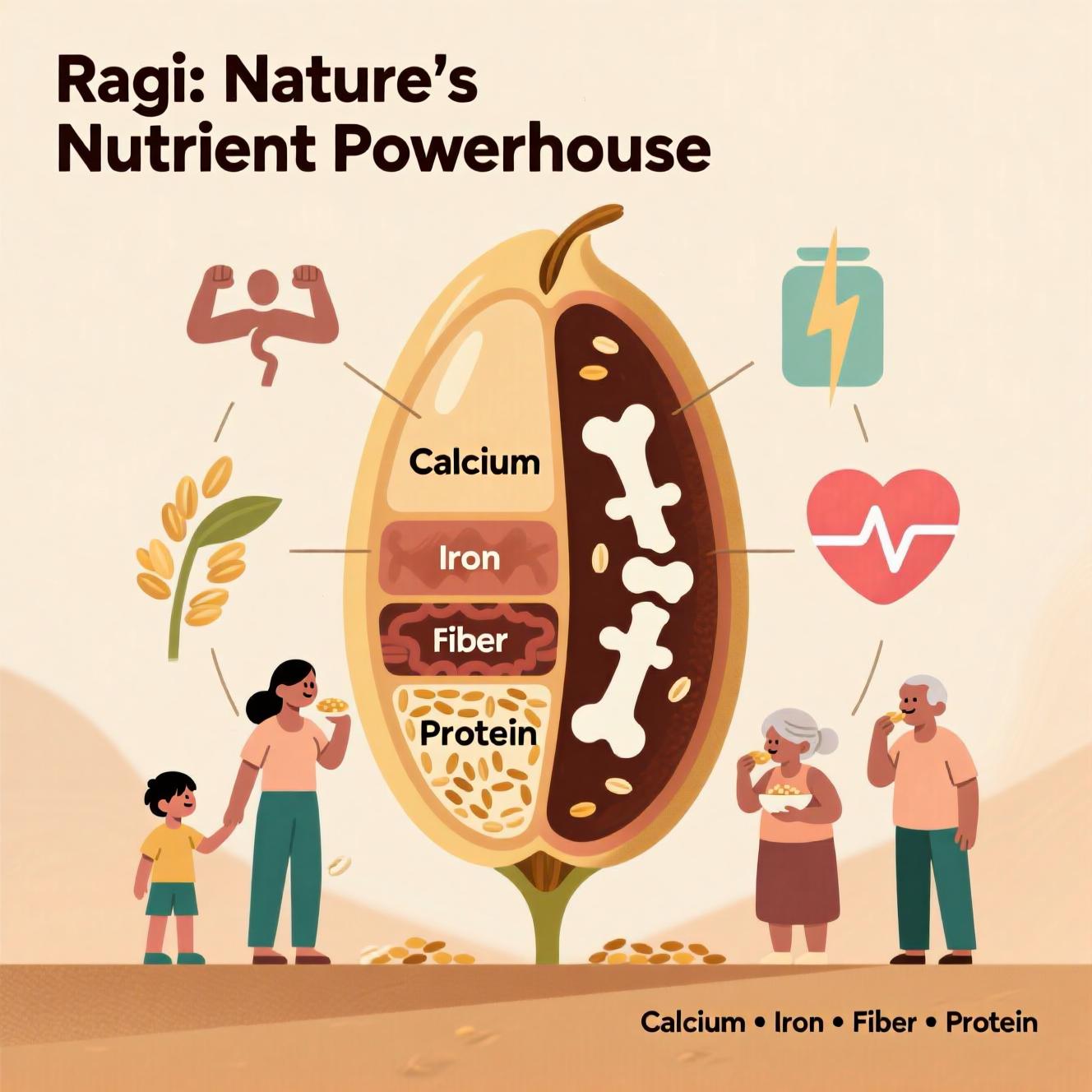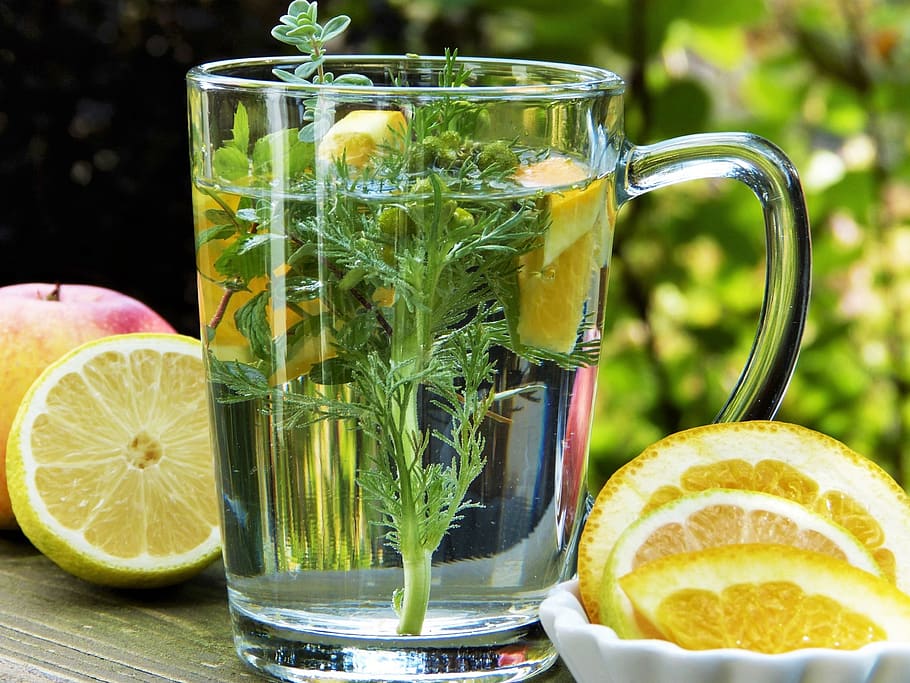What is Ragi?
- Common Name: Finger Millet
- Scientific Name: Eleusine coracana
- Sanskrit Name: Shyamaka, Mandika, or Kodrava (in Ayurvedic texts)
- Appearance: Tiny, reddish-brown grains
- Gluten-Free: Yes – safe for celiac and gluten-sensitive individuals
- Taste: Nutty, earthy, slightly malty
- Form Used: Whole grain, flour (most common), sprouted, or fermented
Nutritional Profile of Ragi (per 100g raw)
🔹 Calcium Content: ~344 mg/100g — 10x more than milk per 100g (milk has ~120mg/100ml)
Top Health Benefits of Ragi
1. Rich in Calcium – Best for Bones & Teeth
- Ideal for children, pregnant women, lactating mothers, and elderly.
- Helps prevent osteoporosis, rickets, and bone fractures.
- A natural dairy-free calcium source for vegans.
2. Excellent for Diabetics (Low Glycemic Index)
- GI: ~55 (low to moderate) – releases glucose slowly.
- High fiber and polyphenols help regulate blood sugar.
- Studies show improved insulin sensitivity with regular ragi intake.
3. Supports Weight Loss & Satiety
- High fiber and complex carbs keep you full longer.
- Low fat, nutrient-dense – great for healthy weight management.
4. Improves Digestion & Gut Health
- Rich in dietary fiber – prevents constipation.
- Acts as a prebiotic, feeding good gut bacteria.
5. Boosts Hemoglobin (Fights Anemia)
- Contains iron (3.9mg/100g) + folate – essential for RBC production.
- Combine with vitamin C (lemon, amla, tomatoes) for better iron absorption.
6. Heart-Healthy Grain
- Reduces bad cholesterol (LDL) due to fiber and antioxidants.
- Magnesium and potassium help regulate blood pressure.
7. Rich in Antioxidants
- Contains phenolic acids (like ferulic acid) and flavonoids.
- Fights oxidative stress, reduces inflammation, and may lower cancer risk.
8. Supports Brain Health & Mood
- Contains tryptophan, an amino acid that helps produce serotonin (the “happy hormone”).
- May help with sleep, anxiety, and depression.
9. Good for Skin & Hair
- Rich in amino acids, antioxidants, and minerals.
- Helps in collagen production, reducing acne, and preventing hair fall.
Best Time to Eat Ragi
- Morning or Lunch: Best time due to slow energy release.
- Breakfast: Ragi porridge, malt, or dosa – ideal for kids and elderly.
- Winter & Monsoon: Especially beneficial due to warming nature.
- Avoid at Night? Can be eaten at night if well-cooked and in moderation — especially as warm porridge, which is soothing.Ragi malt or porridge before bed can promote sleep due to tryptophan.
What to Mix with Ragi for Better Absorption?
Ragi contains phytic acid, which can bind minerals. Enhance nutrient uptake by:
Example: Ragi dosa with coconut chutney + lime = perfect balance of protein, iron, and vitamin C.
Best For Which Diseases/Conditions?
Caution:
- Hypothyroidism: Ragi contains goitrogens – eat in moderation, always well-cooked or fermented.
- Kidney Stones: High in oxalates – limit if prone to calcium-oxalate stones.
Ragi in Ayurveda
In classical Ayurvedic texts:
- Charaka & Sushruta: Refer to ragi as Shyamaka or Mandika.
- Ashtanga Hridaya (Vagbhata): Mentions Mandika with properties similar to ragi.
Ayurvedic Properties (Guna & Virya)
Ragi is cooling – excellent in summer, for people with acidity, skin issues, or high Pitta.
How to Use Ragi in Daily Diet?
- Ragi Porridge (Malt) – With milk, jaggery, banana, ghee
- Ragi Mudde – Steamed balls (Karnataka style)
- Ragi Dosa / Idli – Fermented, easy to digest
- Ragi Roti / Bhakri – Mixed with wheat or jowar for softness
- Ragi Cookies / Ladoo – Healthy snacks for kids
- Ragi Smoothie – With dates, banana, milk
- Ragi Upma / Pongal – Savory breakfast option
Sprouted or fermented ragi is even more nutritious and digestible.
Why Choose Ragi Over Other Grains?
- Highest calcium among cereals
- Cooling effect – unlike rice or wheat which can be heating
- Gluten-free & diabetic-friendly
- Ideal for all ages – infants, kids, adults, elderly
- Sustainable & drought-resistant crop





